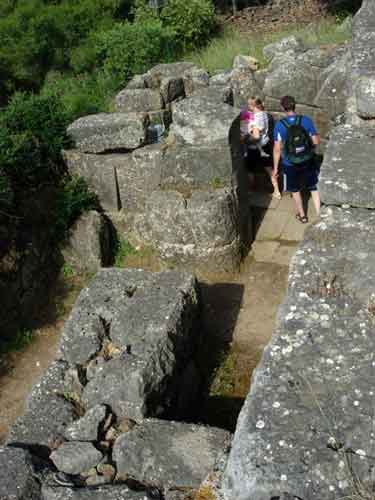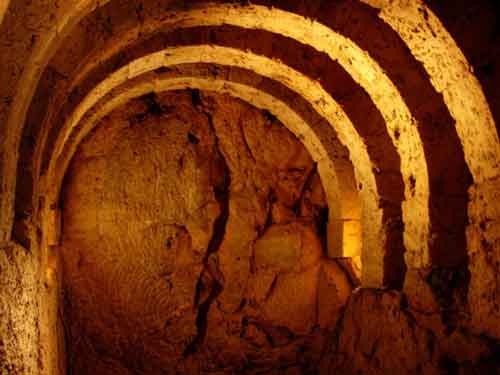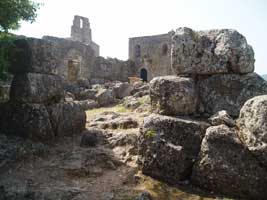.
Ἐφύρα, πόλις Ἠπείρου, ἀπὸ Ἐφύρου τοῦ Ἄμβρακος τοῦ Θεσπρωτοῦ τοῦ Λυκάονος τοῦ Πελασγοῦ τοῦ γηγενοῦς τοῦ Ἀρκάδος. ἐκ ταύτης Ἀστυόχη, ἡ μήτηρ Τληπολέμου, ὥς φησιν Ὅμηρος. ἦν δὲ αὕτη μεταξὺ Πύλου καὶ Ἤλιδος, ὡς Παρμενίσκος φησίν. ἠγνόησε δ´ ὅτι μυχὸς ἡ Κόρινθός ἐστι Γλαύκῳ πρὸς ἀνατολὰς οἰκοῦντι ὡς ἂν τῆς Εὐρώπης οὖσα δυτικωτάτη. κέκληται δὲ ἀπὸ Κορίνθου. Ὅμηρος οὖν τὸ Ἐφύρη ἐπὶ τῆς Κορίνθου ἔφη. ἔστι καὶ ἄλλη Ἐφύρη Κράννουν λεγομένη, ὥς φησι Κινέας ὁ ῥήτωρ καὶ Ἐπαφρόδιτος. δευτέρα περὶ Θεσσαλίαν. τρίτη Οἰνόη, καὶ νῆσος οὐ μακρὰν ἀπέχουσα Μήλου. ὁ πολίτης Ἐφυραῖος. ἔστι καὶ Ἀρκαδίας ἄλλη. ἔστι [καὶ Θεσσαλίας] καὶ Ἰταλίας κατὰ Καμπανίαν. ἔστι καὶ κώμη Αἰτωλίας Ἐφύρα. τὸ ἐθνικὸν Ἔφυρος. τὸ κτητικὸν τῆς Θεσπρωτίας Ἐφύριος. καὶ Ἐφύρηθεν ἀπὸ τόπου ἐπίρρημα. Stephanus of Byzantium
Ephyra, various places are mentioned with that name:
Ephyra (Kichyros)
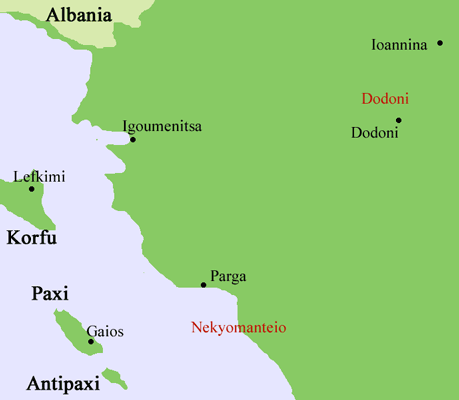
Ephyra is also a place of the Nekromanteion / Nekyomaneteion around the modern city of Parga in Epirus
A Tale of Two Cities: Homeric Ephyra and Corinthian Identity in the Archaic Age
Kichyros (Cichorus, Cichyrus), later called Ephyra, was the capital of ancient Thesprotia build by the Pelasgian leader Thesprotos. Thucydides describes it as situated in the district Elaeatis in Thesprotia, away from the sea. At its site is the famous Necromanteion (Nekromanteion, Oracle of the Dead). First settled during the Bronze Age and resettled in the 14th century B.C. by colonists most probably from Chaonia and the W. Peloponnese region.
Located in Elis of Thesprotis the city is about 800m N of the junction of the Kokkytos River with the Acheron, and about 4.5 km E of the bay of Ammoudia. Near it is the outlet into the sea of the Acherusian Lake. Strabo (7.7.5) gives the same information and adds that in his time Ephyra was called Kichyros.
In Mythology
Neoptolemos was said to have landed at Kichyros (Ephyra) on his return from Troy (Pind. Nem. 7.37-39) and Odysseus came there later to get poison for his arrows (Od. 1 .259f). Theseus and Perithoos came to snatch away Persephone, wife of Aidoneus King of Ephyra. These were none other than Persephone and Hades, the gods of the underworld, who had a shrine and an oracle at Ephyra (Paus. 1.17.4-5, 9.36.3; Plut. Theseus 31.35).
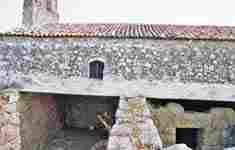
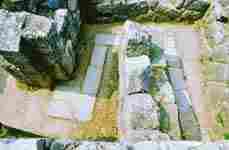
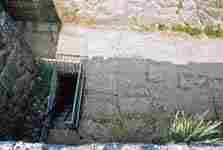
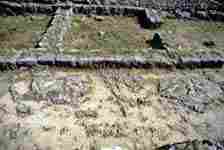
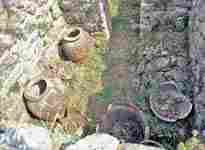
Information of the location
The site of Ephyra is confirmed by the excavation of the ancient oracle of the dead, Necromanteion, on the hill of Agios Ioannis near the village of Mesopotamos, 150 m N of the junction of the Kokkytos with the Acheron. The remains of three ancient wall circuits are preserved on the limestone hill of Xylokastro. The finds within the acropolis, chiefly sherds of local pottery of the Bronze Age and Mycenaean sherds, together with the worship of the chthonic goddess Persephone.
After the surrender of the Elean colonies in Kassopaia to Philip II of Macedon in 343-342 B.C, (Dem. 7.32) and their subjection to the Thesprotians, Ephyra appears to have reverted to its original name, Kichyros, which had been kept alive in some neighboring Thesprotian settlement (Kichyros, the former Ephyra: Strab. 7.7.5, 8.3.5). Some finds, chiefly pottery of the 1st c. B.C., confirm the statement of Pausanias (1.17.5) that Kichyros was in existence in his time.
Ancient Accounts
The Thesprotia Kichyros/Ephyra appears to be the town mentioned in two passages of the Odyssey (i. 259, ii. 328). The Ephyri, mentioned in a passage of the Iliad (xiii. 301), were supposed by Pausanias to be the Thesprotians inhabitants of the town (Paus. ix. 36.3); but Strabo maintained that the poet referred to the Thessalian Ephyra (Strab. ix. p. 442). Some commentators even supposed the Ephyra on the Selleeis (Hom. Il. ii. 659, xv. 531) to be the Thesprotian town, but Strabo expressly maintains that Homer alludes in these passages to the Eleian town (Strab. vii. p. 328,; comp. viii. p. 338). Pausanias represents Cichyrus as the capital of the ancient kings of Thesprotia, where Theseus and Peirithous were thrown into chains by Aidoneus; and its celebrity in the most ancient times may also be inferred from a passage of Pindar. (Paus. i. 17. 4; Pind. Nem. vii. 55.) (Leake, Northern Greece. vol. iii. p. 7, vol. iv. pp. 53, 175.)
---------------------------

Ephyra in Peloponnesus
and mighty Hercules, who'd taken her from Ephyra,
by the river Selleis, after razing many towns
full of vital warriors. Iliad Book2
It is assumed that one Ephyra was an old name of the city Corinth
Links
The Princeton Encyclopedia of Classical Sites
| Ancient Greece
Science, Technology , Medicine , Warfare, , Biographies , Life , Cities/Places/Maps , Arts , Literature , Philosophy ,Olympics, Mythology , History , Images Medieval Greece / Byzantine Empire Science, Technology, Arts, , Warfare , Literature, Biographies, Icons, History Modern Greece Cities, Islands, Regions, Fauna/Flora ,Biographies , History , Warfare, Science/Technology, Literature, Music , Arts , Film/Actors , Sport , Fashion --- |
Retrieved from "http://en.wikipedia.org/"
All text is available under the terms of the GNU Free Documentation License


